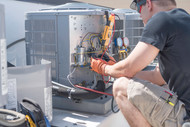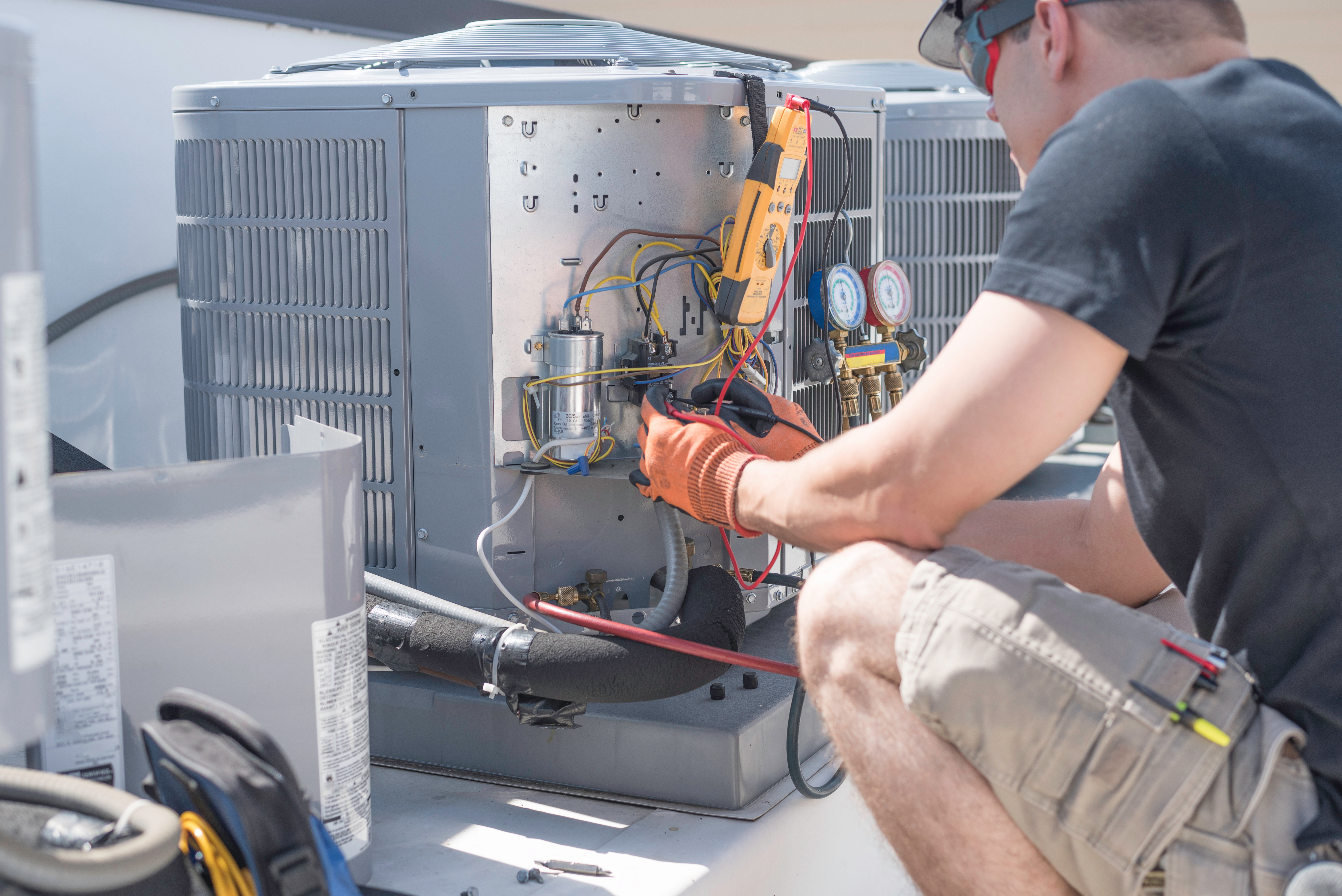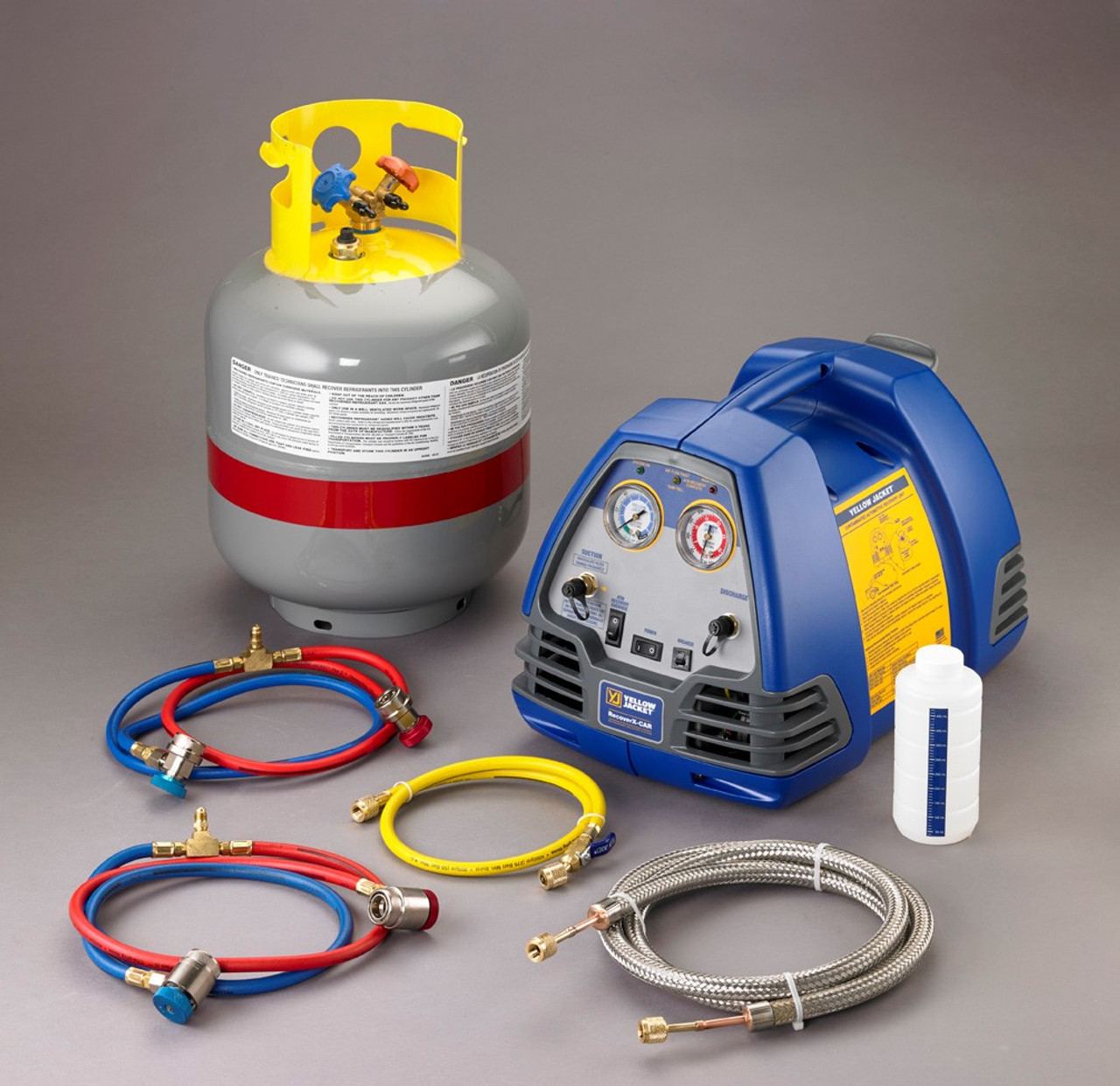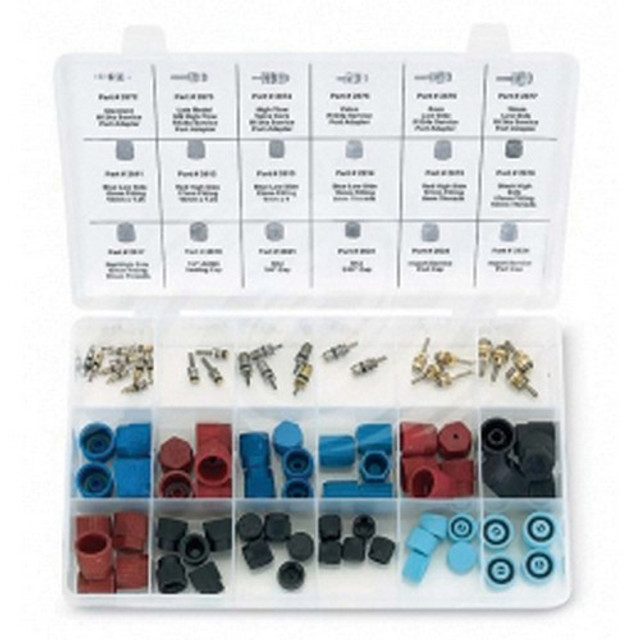9-Step Refrigerant Recovery Guide for Efficiency
2nd May 2024
The process of refrigerant recovery is a key component in maintaining HVAC systems for both operational efficiency and compliance with environmental laws.
This blog covers the 8 Steps to refrigerant recovery, whether you’re an expert or just starting out, our methodical guide ensures you can carry out refrigerant recovery with meticulous precision.
Let’s get started to make your HVAC servicing top-notch and mindful.
When & Why Do You Need Refrigerant Recovery?
Refrigerant recovery is necessary during specific scenarios during HVAC service and for several compelling reasons. Here's when and why it's needed:
When Do You Need Refrigerant Recovery?
- System Maintenance and Repair: Whenever doing HVAC service you might open the refrigerant circuit, it's important to recover the refrigerant to prevent any leaks. This includes tasks like replacing components like compressors, evaporators, or condensers.
- Decommissioning or Disposal: Before disposing of any HVAC equipment, you must recover all refrigerant to ensure that it doesn't escape into the atmosphere, which could be environmentally harmful.
- Retrofitting or Upgrading: When upgrading an HVAC system or retrofitting it to use a different type of refrigerant, the old refrigerant must be completely removed and properly handled before introducing the new type.
- Leak Detection and Repair: If a leak is suspected, refrigerant may need to be recovered to allow for accurate leak detection and repair, after which it can be recharged safely back into the system.
Why Is Refrigerant Recovery is Important?
- Environmental Protection: Refrigerants typically contain chemicals that can be extremely harmful to the environment, contributing to ozone depletion and global warming if released. Proper recovery and recycling prevent these chemicals from causing atmospheric damage.
- Legal Compliance: Most countries have strict environmental laws regulating the handling of refrigerants, including mandatory recovery and proper disposal to prevent illegal venting into the atmosphere. Non-compliance can result in severe penalties and fines.
- Economic Efficiency: By recovering and recycling refrigerant, HVAC technicians can reuse these expensive chemicals rather than purchasing new supplies, reducing overall operational costs.
- System Performance: Proper recovery techniques ensure that the correct amount of refrigerant is maintained within the system, which is essential for optimal performance. Incorrect refrigerant levels can lead to reduced efficiency and increased energy costs.
- Safety: Many refrigerants are toxic, flammable, or can displace oxygen, creating potentially hazardous conditions if they leak. Safe recovery practices help protect the health and safety of technicians and the general public.
What Refrigerant Recovery Tools You Need?
For efficient and safe refrigerant recovery during HVAC service, specific tools and equipment are necessary. Here’s a breakdown of the essential tools required:
This is the primary tool used for extracting refrigerant from an HVAC system.
Recovery machines are designed to safely remove and store refrigerant without releasing it into the atmosphere.
These are specialized containers used to hold the recovered refrigerant.
It's important that the tanks are EPA-certified for the type of refrigerant they will contain and are not overfilled to ensure safety and compliance.
This set includes gauges to measure the pressure within the HVAC system and hoses for connecting the recovery machine to the system.
The gauges help monitor the recovery process to ensure it is proceeding correctly and safely.
These valves are used to control the flow of refrigerant during the recovery process.
They ensure that the connection between the recovery machine and the HVAC system is secure and leak-free.
Used to weigh the recovery tank before and after recovery to determine the amount of refrigerant removed.
This ensures that the tank is not overfilled and helps in documenting the quantity for regulatory compliance.
Safety is paramount when handling refrigerants, as they can be hazardous. Protective gear includes gloves, goggles, and sometimes a respirator, depending on the type of refrigerant and the environment of the work area.
Refrigerant Recovery: Easy Step By Step Guide To Get It Done
Refrigerant recovery is a critical procedure. Below is a detailed, step-by-step guide to performing refrigerant recovery effectively:
Step 1: Verify and Prepare Equipment
- Check the Recovery Unit: Ensure the recovery unit is in prime condition and appropriate for the type of refrigerant being recovered.
- Set Up the Recovery Cylinder: Place the recovery cylinder on a scale to monitor the amount of refrigerant. Make sure the cylinder is evacuated if necessary and appropriate for the refrigerant.
Step 2: Ensure Safety Measures
- Ensure Safety Gear is Worn: Always wear protective gloves, goggles, and possibly a respirator to safeguard against any refrigerant exposure.
- Power Down: Confirm that the power to the HVAC system is turned off before beginning any service work to prevent any electrical hazards.
Step 3: Connect System and Machine
- Access the System: Remove the service panel to expose the system’s service ports.
- Attach Manifold Hoses: Connect the manifold hoses to the system’s service ports—blue hose for the low side and red hose for the high side.
- Connect Hoses to Recovery Unit: Attach the manifold’s charging hose to the inlet port of the recovery machine and connect another hose from the discharge port to the recovery cylinder.
Step 4: Activate The Recovery Process
- Open and Set Valves: Ensure the tank valve is closed. Open the manifold valve and adjust the recovery machine valve to the recovery setting.
- Purge Air: Before starting the recovery, purge the air from the hoses and recovery unit at the tank valve connection to ensure accuracy and safety.
Step 5: Monitor Recovery with Digital Tools
- Utilize a Smart Scale: Power on a digital scale that is capable of connecting to a smart device via Bluetooth. Use an app to monitor the weight, ensuring precision in the amount of refrigerant recovered.
- Configure Scale Settings: Set the scale to the desired units (pounds and ounces or kilograms). Zero the scale to ensure accurate measurement from the start of the recovery process.
Step 6: Continue And Monitor The Recovery Process
- Start the Recovery Machine: With everything connected and set, start the recovery machine. Monitor the machine’s status indicator to ensure it is functioning properly.
- Track Recovery: Keep an eye on the scale’s display through the app. It can provide a numeric or graphical representation of the weight changes, helping in precise monitoring.
Step 7: Conclude Recovery Process
- Automatic Shutdown: The recovery machine should automatically power off once the desired vacuum level is reached, indicated by a change in the status light.
- Purge Remaining Refrigerant: Switch the recovery machine to purge mode to clear out any residual refrigerant from the system and the unit.
Step 8: Document and Close Operation
- Close All Valves: Shut the tank valve and set the recovery machine to the closed position to secure any recovered refrigerant.
- Record the Recovery: Use the app to stop the data log recording and save or email the recovery log for documentation, ensuring all data is captured for compliance and record-keeping.
Step 9: Clean Up
- Disconnect Equipment: Safely disconnect all hoses and close all service valves. Replace any service panel and ensure the area is clean and clear.
Special Offer: Get 20% Off on Yellow Jacket Refrigerant Recovery Machine With JB Tools
Unlock efficient and safe refrigerant recovery with the Yellow Jacket 37825, specially designed for contaminated R-134a and R-1234yf MVAC systems. This machine is your go-to solution for systems with compromised refrigerant quality, ensuring thorough recovery and system safety. Take advantage of our limited-time 20% discount and enhance your HVAC toolkit with top-tier technology. Don't miss out on this exclusive offer – shop now and ensure precision in your automotive services!
Key Features:
- Dual Recovery Modes: Handles both vapor and liquid refrigerants effectively.
- Advanced Compressor: Twin cylinder, 1/2 hp oil-less compressor manages both liquid and vapor without the need for inlet regulation.
- Simultaneous Connection: Unique “Y” hose assembly for simultaneous recovery from both the low and high sides.
- Safety First: Features an 80% tank full shut-off, high-pressure shut-off switch, and safe venting system to enhance operational safety.
- Robust Design: Built to last with a high strength HDPE case, designed and manufactured in the U.S.A.
- Full Package: Includes recovery machine, hose kit with couplings, and oil fill bottle for precise oil recovery measurement.
Save More On Refrigerant Recovery Tools With JB Tools
Save big on your next purchase of refrigerant recovery tools with JB Tools! Discover unbeatable prices on a wide range of top-quality equipment designed to make your HVAC servicing more efficient and compliant with industry standards.
Take advantage of our special promotions and enjoy significant savings on all your HVAC tool needs. Shop now at JB Tools and equip yourself with the best for less.







